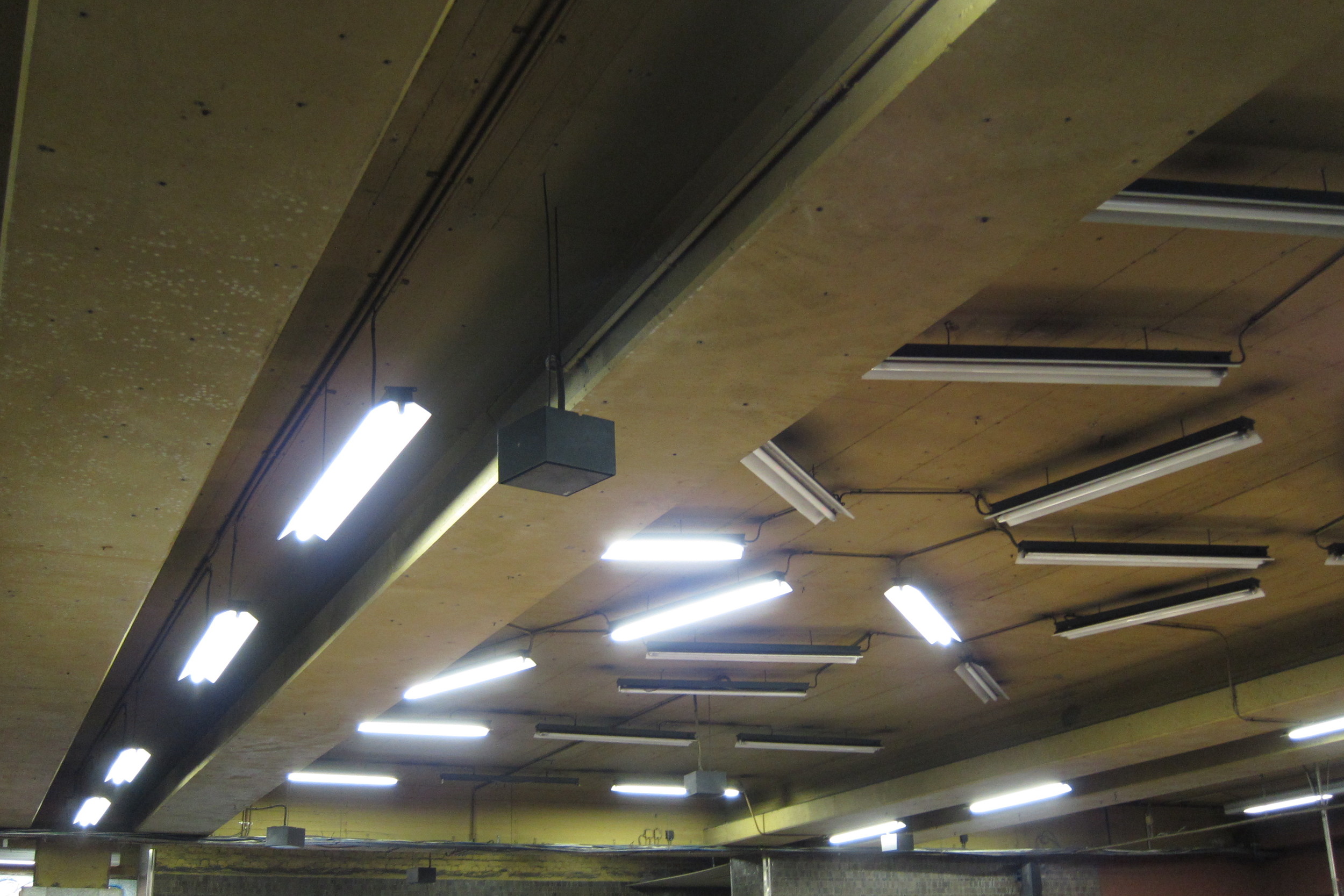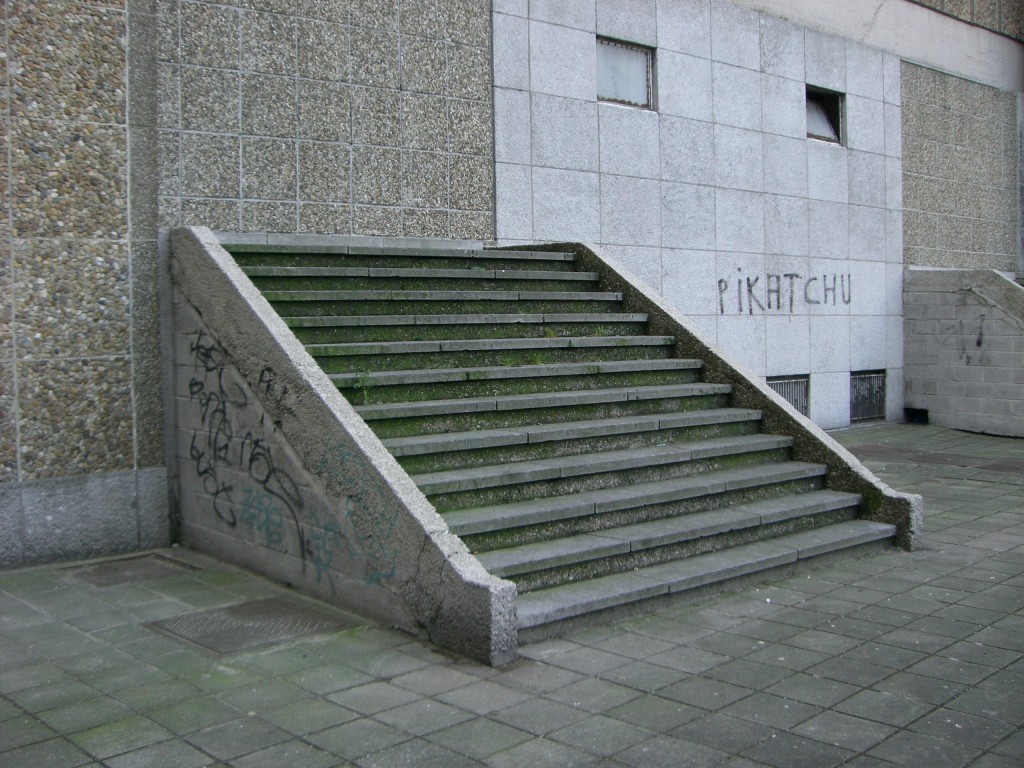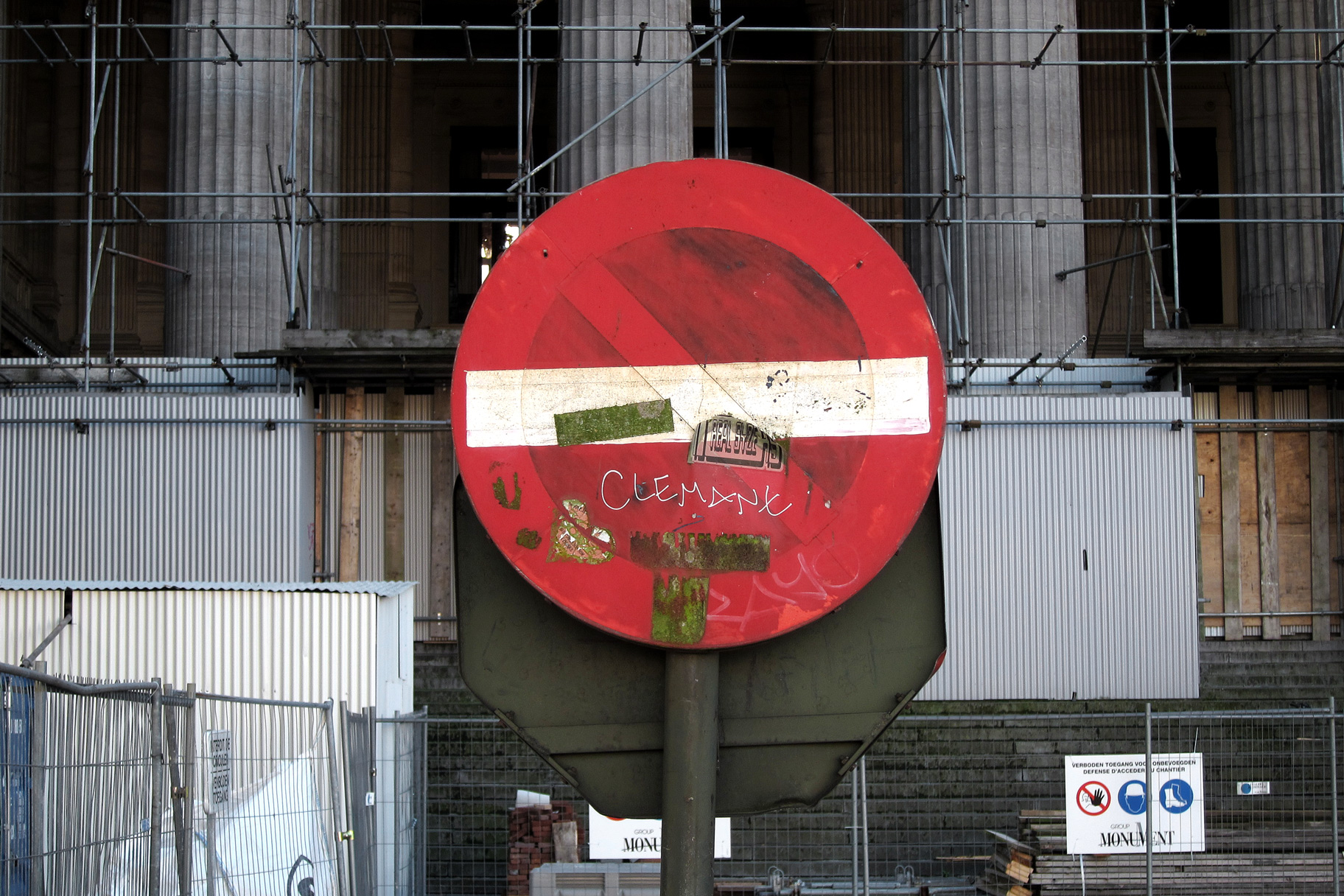Belgian Solutions
David Helbich, an artist and photographer, has been living in Brussels, Belgium for the last eleven years. Brussels is the capital of the European Union, a complex patchwork of nations, languages, and ancient neighborhoods. The citizens are fragmented along various cultural lines, but co-exist in a city-state of blasé bonhomie. Helbich, a native German, began going on long walks to learn the geography of his new home. Eventually, he started taking his camera to document wrinkles in the urban fabric that he dubbed Belgian solutions.
Parking lot lights, by David Helbich. All photos in this post from his site.
In 2009, Helbich began posting the images to Facebook, attracting both a large following and a flood of contributions from all over the world. Recently, that spun off into a standalone site and a postcard-sized book, now available in Europe. Each photograph is numbered in a cryptic system known only to Mr. Helbich.
A Belgian solution is not strictly defined by the artist, but they seem to fit into a certain constellation of architectural and artistic philosophy -- Adhocism, Duchamp's readymades, and the high-minded modern follies of Bernard Tschumi at Parc de la Villette. In each case, the existing environment is manipulated to solve a problem by any means available, even if the solution ends up being temporary, ugly, or ungainly. In their expedience and lack of grace, Belgian solutions achieve a visual calm born of pure function. Some examples solve a short-term problem -- blocking off a doorway but leaving the entry staircase in place, for instance -- and, in doing so, create a longer-term problem, a functionless oddity, a folly.
Drawing by Bernard Tschumi of his follies -- function-free, purely visual structures -- at Parc de la Villette.
Dead-end staircase. Photo by David Helbich.
As a young fella, in the full flower of awkwardness, I attended Friends School in Baltimore for three years. The middle school was a grab-bag of architectural mash-ups, the result of years of haphazard additions. In the northeast corner of the first floor, as I recall, was a staircase that ascended to a landing, then turned to the left and dead-ended right into a wall. Lockers were placed on the top step, ad-hoc icing on the cake. The general floor plan of the first floor was a doughnut of hallways surrounding a core of the faculty lounge and one small classroom. However, the east leg of corridor passed through Mr. Rutstein's history class; a door on each end was only opened between periods. I wish I had some photos, but Friends has, sadly, been renovated, certainly into some higher state of architectural being.
Painted-over sign. Photo by David Helbich.
The word frictionless commands a lot of pixels these days, batting around design websites and blogs about start-ups. In a virtual environment, it is tempting, even semi-possible, to edit the friction completely out of a task. Designers and developers find themselves chasing that elusive ghost, effortless , in an attempt to goose downloads, or click-throughs, or likes.
But life, nor any object in it, is not effortless. Entropy insures that any system eventually dissolves into disruption, decay, and disorder, one way or another. Urban hackers and informal designers are harnessing discord and wrestling it to manageable ends -- form follows friction. Like some sort of urban judo, or spacecraft using planets to slingshot to their destination, friction can become the pivot point for creating something extraordinary instead of a raw nerve waiting to be ground down.
A big 'ol point of friction -- when in doubt, crash 'em together! Photo by David Helbich.




